- Clone
- HCD56 (See other available formats)
- Regulatory Status
- RUO
- Other Names
- Leu-19, NKH1
- Isotype
- Mouse IgG1, κ
- Ave. Rating
- Submit a Review
- Product Citations
- publications
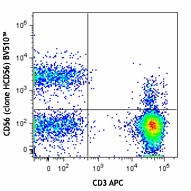
-

Human peripheral blood lymphocytes were stained with CD3 APC and CD56 (clone HCD56) Brilliant Violet 510™.
| Cat # | Size | Price | Quantity Check Availability | Save | ||
|---|---|---|---|---|---|---|
| 318339 | 25 tests | $215 | ||||
| 318340 | 100 tests | $407 | ||||
CD56 is a single transmembrane glycoprotein also known as NCAM (Neural Cell Adhesion Molecule), Leu-19, or NKH1. It is a member of the Ig superfamily. The 140 kD isoform is expressed on NK cells and NK-T cells. CD56 is also expressed in the brain (cerebellum and cortex) and at neuromuscular junctions. Certain large granular lymphocyte (LGL) leukemias, small-cell lung carcinomas, neuronal derived tumors, myelomas, and myeloid leukemias also express CD56. CD56 plays a role in homophilic and heterophilic adhesion via binding to itself or heparin sulfate.
Product DetailsProduct Details
- Verified Reactivity
- Human
- Reported Reactivity
- African Green, Baboon, Cynomolgus, Rhesus
- Antibody Type
- Monoclonal
- Host Species
- Mouse
- Formulation
- Phosphate-buffered solution, pH 7.2, containing 0.09% sodium azide and BSA (origin USA).
- Preparation
- The antibody was purified by affinity chromatography and conjugated with Brilliant Violet 510™ under optimal conditions.
- Concentration
- Lot-specific (to obtain lot-specific concentration and expiration, please enter the lot number in our Certificate of Analysis online tool.)
- Storage & Handling
- The antibody solution should be stored undiluted between 2°C and 8°C, and protected from prolonged exposure to light. Do not freeze.
- Application
-
FC - Quality tested
- Recommended Usage
-
Each lot of this antibody is quality control tested by immunofluorescent staining with flow cytometric analysis. For flow cytometric staining, the suggested use of this reagent is 5 µl per million cells in 100 µl staining volume or 5 µl per 100 µl of whole blood.
Brilliant Violet 510™ excites at 405 nm and emits at 510 nm. The bandpass filter 510/50 nm is recommended for detection, although filter optimization may be required depending on other fluorophores used. Be sure to verify that your cytometer configuration and software setup are appropriate for detecting this channel. Refer to your instrument manual or manufacturer for support. Brilliant Violet 510™ is a trademark of Sirigen Group Ltd.
Learn more about Brilliant Violet™.
This product is subject to proprietary rights of Sirigen Inc. and is made and sold under license from Sirigen Inc. The purchase of this product conveys to the buyer a non-transferable right to use the purchased product for research purposes only. This product may not be resold or incorporated in any manner into another product for resale. Any use for therapeutics or diagnostics is strictly prohibited. This product is covered by U.S. Patent(s), pending patent applications and foreign equivalents. - Excitation Laser
-
Violet Laser (405 nm)
- Application Notes
-
Clone HCD56 is not recommended for immunohistochemistry formalin-fixed paraffin-embedded tissue.
-
Application References
(PubMed link indicates BioLegend citation) -
- Kishimoto T, et al. Eds. 1997. Leucocyte Typing VI. Garland Publishing Inc. London.
- Correia DV, et al. 2011. Blood 118:992. (FC) PubMed
- Product Citations
-
- RRID
-
AB_2561385 (BioLegend Cat. No. 318339)
AB_2561944 (BioLegend Cat. No. 318340)
Antigen Details
- Structure
- Ig superfamily, single transmembrane or GPI-anchored glycoprotein
- Distribution
-
NK cells, T subset, neural tissue, some LGL and myeloid leukemias
- Function
- Adhesion
- Ligand/Receptor
- Heparin sulfate
- Cell Type
- B cells, Leukemia, Mesenchymal Stem Cells, Neurons, NK cells, T cells
- Biology Area
- Cell Adhesion, Cell Biology, Costimulatory Molecules, Immunology, Innate Immunity, Neuroscience, Stem Cells, Synaptic Biology
- Molecular Family
- Adhesion Molecules, CD Molecules
- Antigen References
-
1. Lanier L, et al. 1991. J. Immunol. 146:4421.
2. Hemperly J, et al. 1990. J. Mol. Neurosci. 2:71.
3. Cremer H, et al. 1994. Nature 367:455. - Gene ID
- 4684 View all products for this Gene ID
- UniProt
- View information about CD56 on UniProt.org
Related FAQs
Other Formats
View All CD56 Reagents Request Custom ConjugationCustomers Also Purchased
Compare Data Across All Formats
This data display is provided for general comparisons between formats.
Your actual data may vary due to variations in samples, target cells, instruments and their settings, staining conditions, and other factors.
If you need assistance with selecting the best format contact our expert technical support team.
-
Purified anti-human CD56 (NCAM)
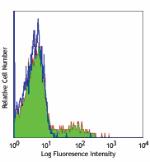
Human peripheral blood lymphocytes stained with purified HCD... -
FITC anti-human CD56 (NCAM)
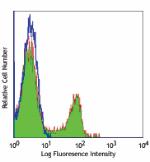
Human peripheral blood lymphocytes stained with HCD56 FITC -
PE anti-human CD56 (NCAM)
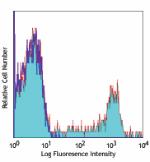
Human peripheral blood lymphocytes stained with HCD56 PE -
PE/Cyanine5 anti-human CD56 (NCAM)
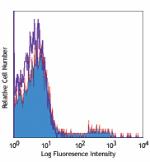
Human peripheral blood lymphocytes stained with HCD56 PE/Cya... -
APC anti-human CD56 (NCAM)
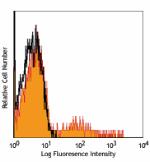
Human peripheral blood lymphocytes stained with HCD56 APC -
Alexa Fluor® 488 anti-human CD56 (NCAM)
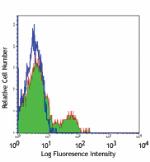
Human peripheral blood lymphocytes stained with HCD56 Alexa ... -
Alexa Fluor® 647 anti-human CD56 (NCAM)
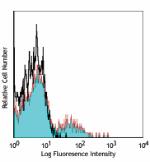
Human peripheral blood lymphocytes stained with HCD56 Alexa ... 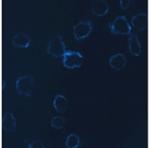
Human NK-92 cells were stained with CD56 (clone HCD56) Alexa... -
Alexa Fluor® 700 anti-human CD56 (NCAM)

Human peripheral blood lymphocytes stained with CD16 (3G8) P... -
PE/Cyanine7 anti-human CD56 (NCAM)
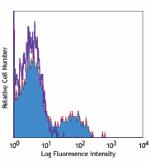
Human peripheral blood lymphocytes stained with HCD56 PE/Cya... -
Biotin anti-human CD56 (NCAM)
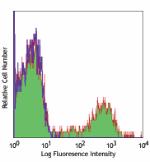
Human peripheral blood lymphocytes stained with biotinylated... 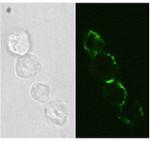
Human NK-92 cells were stained with CD56 (clone HCD56) Bioti... -
PerCP/Cyanine5.5 anti-human CD56 (NCAM)

Human peripheral lymphocytes were stained with CD16 APC and ... -
Pacific Blue™ anti-human CD56 (NCAM)
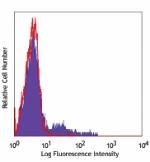
Human peripheral blood lymphocytes stained with HCD56 Pacifi... -
APC/Cyanine7 anti-human CD56 (NCAM)

Human peripheral lymphocytes were stained with CD16 FITC and... -
Brilliant Violet 421™ anti-human CD56 (NCAM)
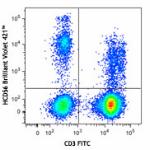
Human peripheral blood lymphocytes were stained with CD3 FIT... 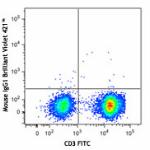
-
Brilliant Violet 570™ anti-human CD56 (NCAM)
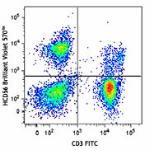
Human peripheral blood lymphocytes were stained with CD3 FIT... 
-
Brilliant Violet 605™ anti-human CD56 (NCAM)
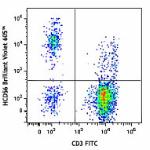
Human peripheral blood lymphocytes were stained with CD3 FIT... -
Brilliant Violet 711™ anti-human CD56 (NCAM)
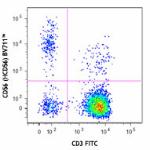
Human peripheral blood lymphocytes were stained with CD3 FIT... -
Brilliant Violet 510™ anti-human CD56 (NCAM)
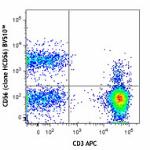
Human peripheral blood lymphocytes were stained with CD3 APC... -
PerCP anti-human CD56 (NCAM)
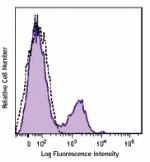
Human peripheral blood lymphocytes were stained with CD56 (c... -
Brilliant Violet 650™ anti-human CD56 (NCAM)

Human peripheral blood lymphocytes were stained with CD3 FIT... 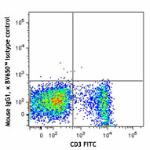
-
Purified anti-human CD56 (NCAM) (Maxpar® Ready)
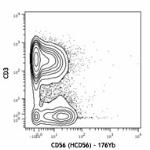
Human PBMCs stained with 170Er-anti-CD3 (UCHT1) and 176Yb-an... -
PE/Dazzle™ 594 anti-human CD56 (NCAM)
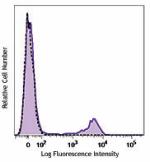
Human peripheral blood lymphocytes were stained with CD56 (c... -
Spark Red™ 718 anti-human CD56 (NCAM)

Human peripheral blood lymphocytes were stained with anti-hu... -
Brilliant Violet 785™ anti-human CD56 (NCAM)

Human peripheral blood lymphocytes were stained with anti-hu... -
APC/Fire™ 810 anti-human CD56 (NCAM)

Human peripheral blood lymphocytes were stained with anti-hu... -
Spark PLUS B550™ anti-human CD56 (NCAM)

Human peripheral blood lymphocytes were stained with anti-hu...
 Login/Register
Login/Register 












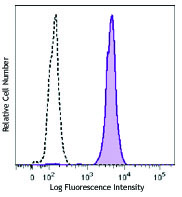
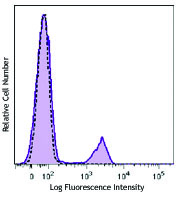




Follow Us